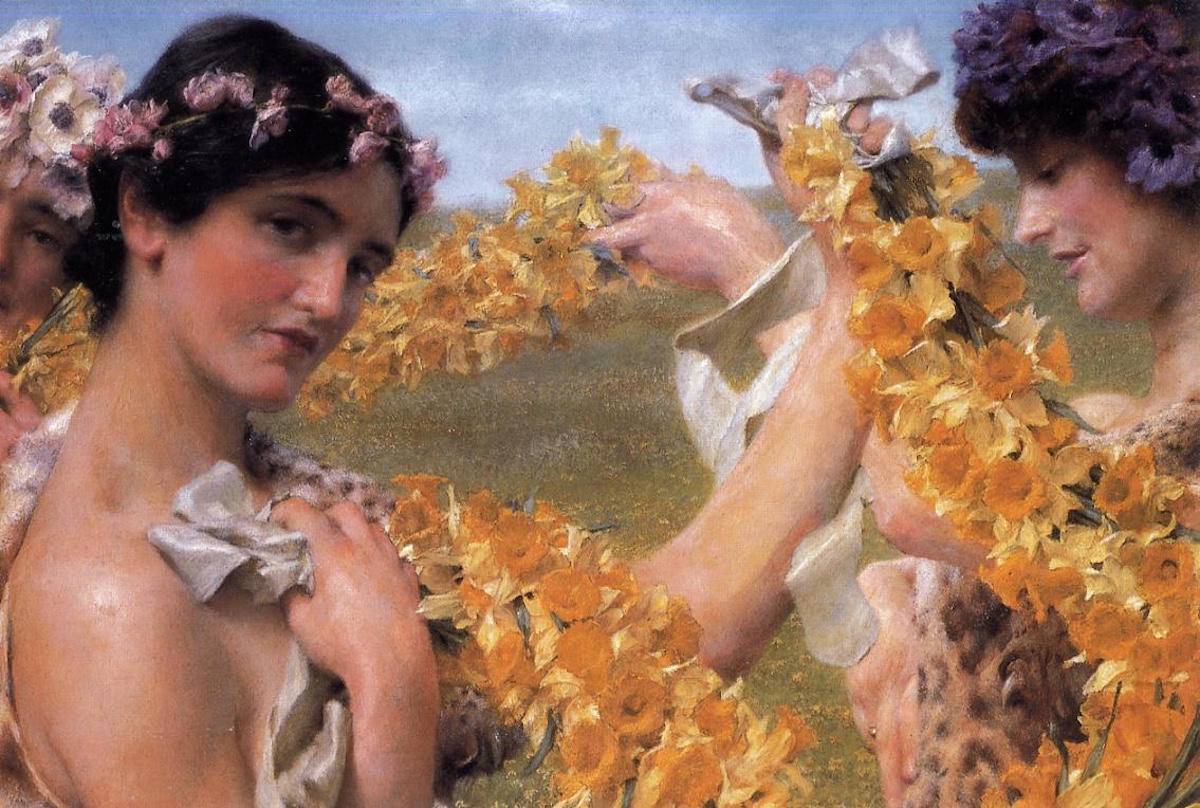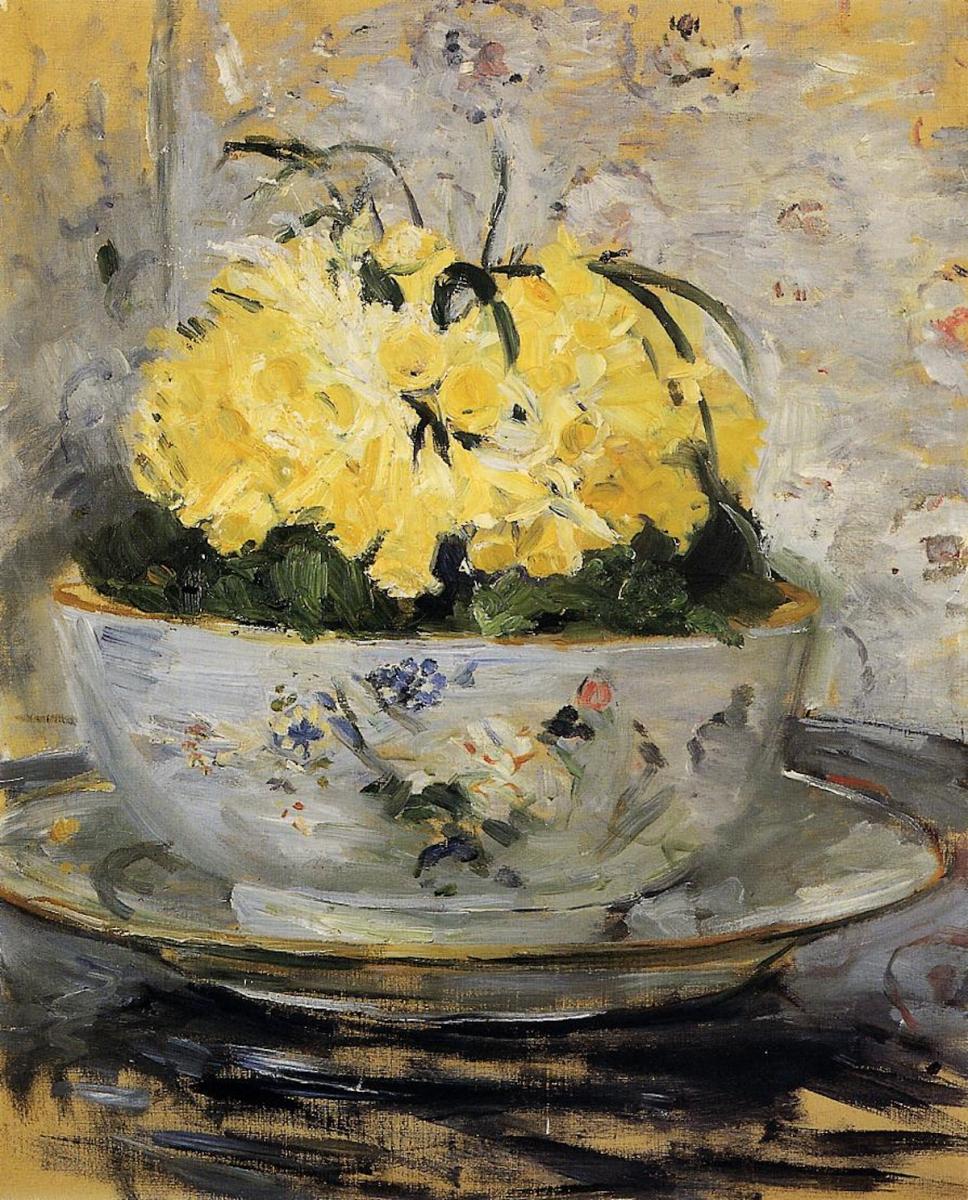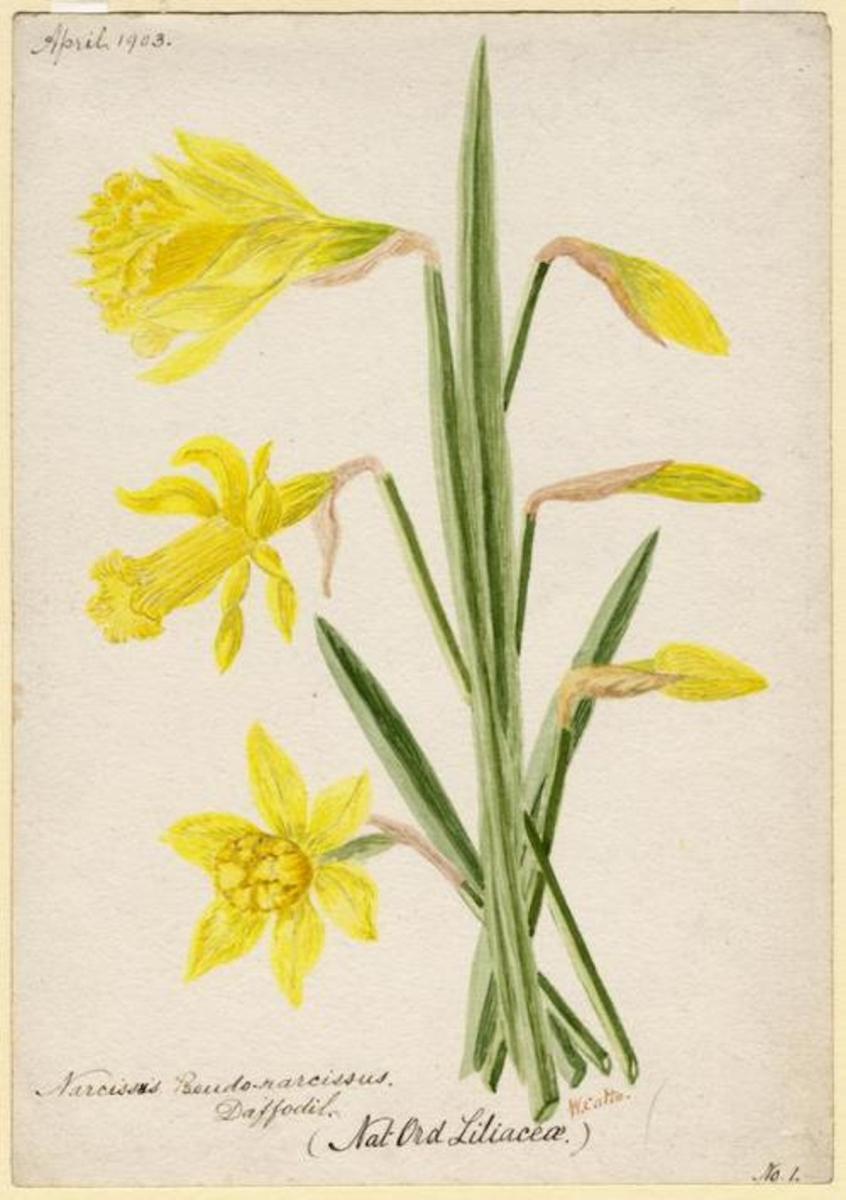This wonderful Cornish workshop and museum is dedicated to the legacy of studio pottery trailblazer Bernard Leach
A short history of the humble daffodil
A short history of the humble daffodil
12 Apr 2024
Harbinger of spring and laden with tales of rebirth, self-love and even poison, the daffodil, says Twigs Way, is a bloom to be reckoned with

When Flowers Return (1911), Lawrence Alma-Tadema. Image: Wikimedia Commons/RMN/R-G OJÉDA
The daffodil is a flower of renewal and rebirth; it reflects the pale spring sun as its delicate scents draw in early wakening bees in search of life-giving nectar.
It all sounds idyllic doesn’t it?
Yet the daffodil holds dark secrets for those who delve into mythology. From ancient Greece to modern symbolism, death hovers in the background of uncertain spring. Even the name ‘daffodil’, with its roots in country folk’s ‘affodil’ or ‘daffadilly’ is a mask for the deadly narcissus, which is the true name for the genus. Sharing its linguistic roots with ‘narcotic’ and ‘narcolepsy’, from the Greek ‘narke’, it warns of the paralytic numbness and intoxication that befall those who imbibe of the sticky juices of the leaves, stems or bulb.
A detail of Echo and Narcissus, 1903, by John William Waterhouse. Image: © National Museums Liverpool/Bridgeman Images
Ancient lore
The ancients loved to spin myths around the daffodil.
They tell how this liminal plant grew at the threshold to the underworld, where Proserpina is snatched while gathering its blooms, leaving her distraught mother, Ceres, goddess of grains and harvest, to plunge the world into winter hibernation for months each year.
The beauteous Narcissus, who pined with love for his own reflection, was said to have had his deathbed marked by sprouting narcissi, leading us to wonder whether he was named for the flower or for his eventual destiny to remain paralysed with love until death.
 Daffodils, 1885, by Berthe Morisot. Image: Wikimedia Commons
Daffodils, 1885, by Berthe Morisot. Image: Wikimedia Commons
A lure for artists
Such stories have been catnip for artists of all mediums.
In his When Flowers Return (1911, see above), Lawrence Alma-Tadema filled his canvas with garlands of daffodils as three maenads (female followers of the Greek god of wine) celebrate the ritual of rebirth.
Artists such as Berthe Morisot and Claude Monet were also drawn to the flowers. Monet scattered his own narcissi in the grasses at his garden in Giverny, part of the fashion for naturalisation championed by the English horticulturalist William Robinson at Gravetye. One of the most famous of Morisot’s paintings, Daffodils (1885) cast their sunshine indoors, forming a neat globe that mirrors the bowl they are placed in.

Daffodils, 1903, by William Catto. Image: Wikimedia Commons/Aberdeen Art Gallery & Museums
Hail the king of daffodils
By the late 19th century there were thousands of types of daffodils thanks to a man known as The Daffodil King.
Born in a small village by the Clyde, Peter Barr (1826–1909) traversed the world in search of new plants, but his heart was in the daffodil. Founding nurseries in Tooting (London) and Long Ditton (Suffolk), he spent his days among his daffodil collections, numbering as many as four million bulbs, and his nights compiling a history of their origins and culture.
These he published in 1884 under the deliberately antiquated title Ye Narciffus or Daffodyl Flowre and hys Roots. Retiring in 1887 he went to Spain and Portugal searching for new narcissus, crossing the Alps and Pyrenees by donkey, cloaked in a blanket like Sancho Panza and being mistaken for a bandit. Although a skilled horticulturalist Barr was quick
to recognise the impact of art and aesthetics on plant fashion. He recalled in 1900 that ‘[Oscar] Wilde used to lecture on aesthetic colours, and to him we owe more than to anyone else the taste for yellow… He took the sunflower, but that is too “lumpy”, and the people soon got tired of sunflowers. Then my daffodils came – and they came to stay.’
Isles of Scilly from the series Home Bulbs for Home Gardens (colour litho), 1920s by AA Moores. Image: © Manchester Art Gallery/Bridgeman Images
Fields of gold
Fields of the flowers become a reality each spring in the Isles of Scilly where, in 1875, the mild climate, combined with a new weekly packet boat to the mainland and a direct rail link from Penzance to London (opened 1859), inspired William Trevellick to try his luck in the booming cut flower market at Covent Garden. Carefully packing 30 bunches of the ‘wild’ narcissi in a hat box, he waited nervously for news of his enterprise.
The blooms were a sensation.
By 1889 almost 200 tons of flowers were being shipped each season, transforming the islands’ economy and their landscape. ‘Scilly White’ and ‘Soleil D’Or’ filled every field, and families came together to plant and harvest, bunch and pack. In World War II, when flower production in Cornwall and the Isles of Scilly was threatened by wartime control on growing and transporting flowers, the plucky islanders sent scented narcissi to Winston Churchill, no less, who responded: ‘These people must be enabled to grow their flowers and send them to London – they cheer us up so much in these dark days.’
Go daffodil hunting!
Inspired to seek out the gold?
Here are just a few glorious sites for daffodils this spring. Enjoy thousands of blooms at Blickling Estate, Norfolk – nationaltrust.org.uk; head to The Wilderness at Hampton Court Palace, East Molesey – hrp.org.uk; discover species from the National Collection of Daffodils at Brodie Castle, Moray – nts.org.uk; and seek the national flower of Wales in glorious Bodnant Garden, Conwy – nationaltrust.org.uk
For more
Read our full feature on the curious story of daffodils in the latest issue of The Arts Society Magazine, out now and available exclusively to members and supporters of The Arts Society (to join see theartssociety.org/member-benefits)
About the Author
Twigs Way
Arts Society Lecturer, is a garden historian, researcher and writer with a fascination for the interplay between plants, art and literature
JOIN OUR MAILING LIST
Become an instant expert!
Find out more about the arts by becoming a Supporter of The Arts Society.
For just £20 a year you will receive invitations to exclusive member events and courses, special offers and concessions, our regular newsletter and our beautiful arts magazine, full of news, views, events and artist profiles.
FIND YOUR NEAREST SOCIETY
MORE FEATURES
Ever wanted to write a crime novel? As Britain’s annual crime writing festival opens, we uncover some top leads
It’s just 10 days until the Summer Olympic Games open in Paris. To mark the moment, Simon Inglis reveals how art and design play a key part in this, the world’s most spectacular multi-sport competition



